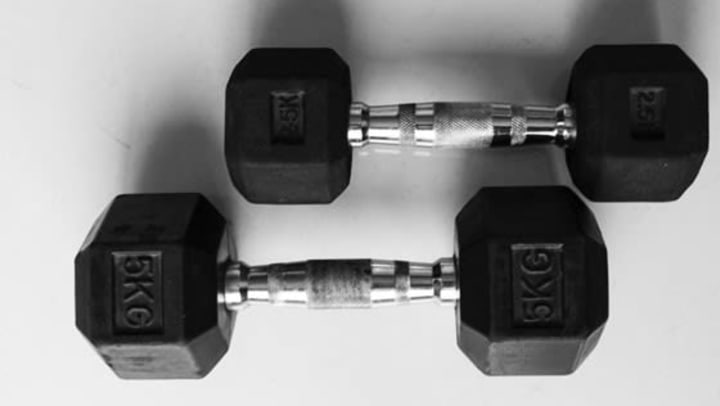Packing your weights for a move can be tricky. You don't want to damage them, but you also don't want to take up too much space. So if you've been searching for how to pack weights for moving, we've got you covered.
This blog post will discuss how to pack your weights for a move and some tips that will help make the process easier. Let's get started!
Clean Your Weights Before Anything Else
Moving is already a pain in the you-know-what. The last thing you want is to add germs and bacteria into the mix. Weights are especially susceptible to collecting all sorts of nasties, so it's essential to clean them before packing them up.
A quick wipe-down with a disinfectant should do the trick, but ensure they're completely dry before packing them away. The last thing you need is for your weights to start rusting in transit.
Get The Materials You’ll Need
There are some materials you'll need to get when it comes to learning how to pack weights for moving. If you don't already have some, go to the store and purchase some of these things—bubble wrap, packing peanuts, packing tape, and a sharpie. You will also need a box or several boxes that are big enough to fit all your weights but not too big that they become difficult to move.
Wrap Your Weights With Bubble Wrap
Now you're moving and must figure out how to transport your beloved steel buddies. You could just throw them in the back of the car, but then they might bang around and get damaged—or worse, injure you or someone else while you're driving.
The best way to protect your weights (and everyone else) is to wrap them in bubble wrap before loading them into the car. Here's a step-by-step guide to wrapping your weights like a pro:
- Start by placing the weight on one end of the bubble wrap.
- Roll the bubble wrap around the weight, covering it completely.
- Use the packing tape to secure the bubble wrap in place.
Repeat these steps 2-4 for each weight.
Label Your Weights
One of the most important things to remember during this process is to label your weights. We know; it sounds obvious. But you'd be surprised by the number of people searching for how to pack weights who overlook this step.
Labeling your weights will save you a lot of time and frustration when it comes to unpacking and setting up your new gym. Trust us; you don't want to be the person who has to guess which weight goes with which barbell. So take a few minutes to label your weights before packing them up. It'll make your life a lot easier in the long run.
Place Weights in a Strong Box
One of the things that can make it even more of a pain to move is having your belongings get damaged in the process. We've all been there; you painstakingly wrap up all your fragile items only to have them arrive at your new home in pieces. It's enough to make you never want to move again.
But when it comes to weights, there is a way to avoid this whole scenario: investing in some good-quality boxes. Not just any old cardboard box will do, mind you. You need something strong enough to withstand a whole lot of jostling around. And considering the heavy weights you'll be packing, it's best to err on the side of caution and get a box or several boxes that are a little bigger and stronger than you think you need.
Pack The Box With Other Lightweight Items
If the box falls or is dropped, the lightweight items will act as a buffer and prevent the heavy weights from hitting each other. And while you do have to be careful about what you put in there, this method is usually effective in preventing damage.
Also, use packing peanuts or crumpled-up newspaper to fill any empty spaces and keep the weights from moving around too much.
Seal The Boxes Carefully
Once you've packed your boxes, it's time to seal them up and get them ready for transport. If you're using packing tape, make sure to seal the edges of the box well and reinforce any seams or corners that might be weak. You don't want your boxes falling apart in transit and spilling their contents all over the place.
Label The Box (Or Boxes)
This step is crucial. You need to label your boxes, so you know what's inside and where it needs to go when you get to your new place. An excellent way to do this is to write the contents on the outside of the box in a permanent marker. That way, even if the tape comes off, you'll still be able to tell what's inside.
You should also label the box with the room it needs to go in at your new place. That way, the movers will know where to put it, and you won't have to waste time unpacking and repacking boxes meant for another room.
Pack Your Weights First
When packing for a move, it's always best to pack your heaviest items first. That way, they'll be at the bottom of the box and won't crush your other belongings. Weights are no exception.
So before you start packing up your entire gym, set aside all the weights you need to move and put them in their own box (or boxes). That way, you can be sure they'll arrive safely at your new place.
Extra Tips
- If you have a lot of weights, it might be worth renting a storage unit to keep them in until you're ready to move. That way, you won't have to worry about them taking up space in your new place.
- If you're hiring movers, be sure to let them know you have weights that need to be moved. There is a chance that they might charge you a little extra, but it's worth it to know they will move your weights safely.
- If you have really heavy weights, don’t place them in boxes and simply bubble wrap them as they are: moving boxes can’t handle certain amounts of weight.
Final Thoughts
Packing weights for a move can seem daunting, but it doesn't have to be. By following these simple tips, you can ensure your weights will arrive at your new home safe and sound.


